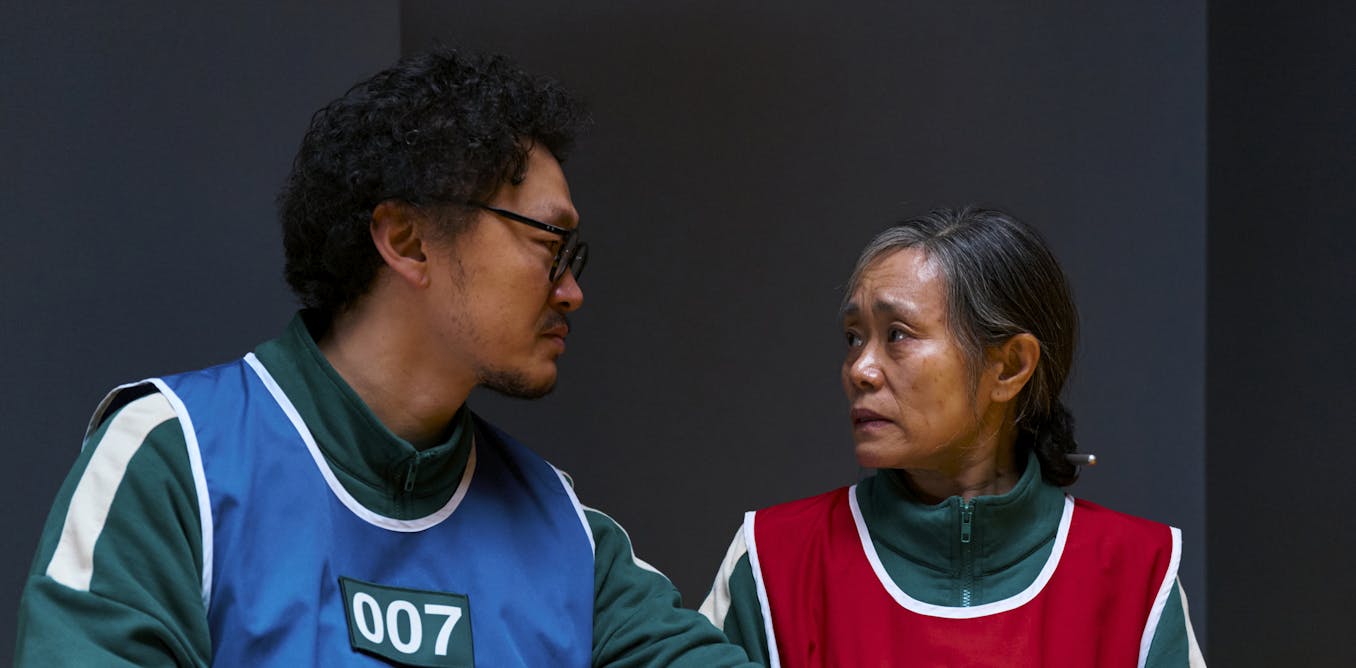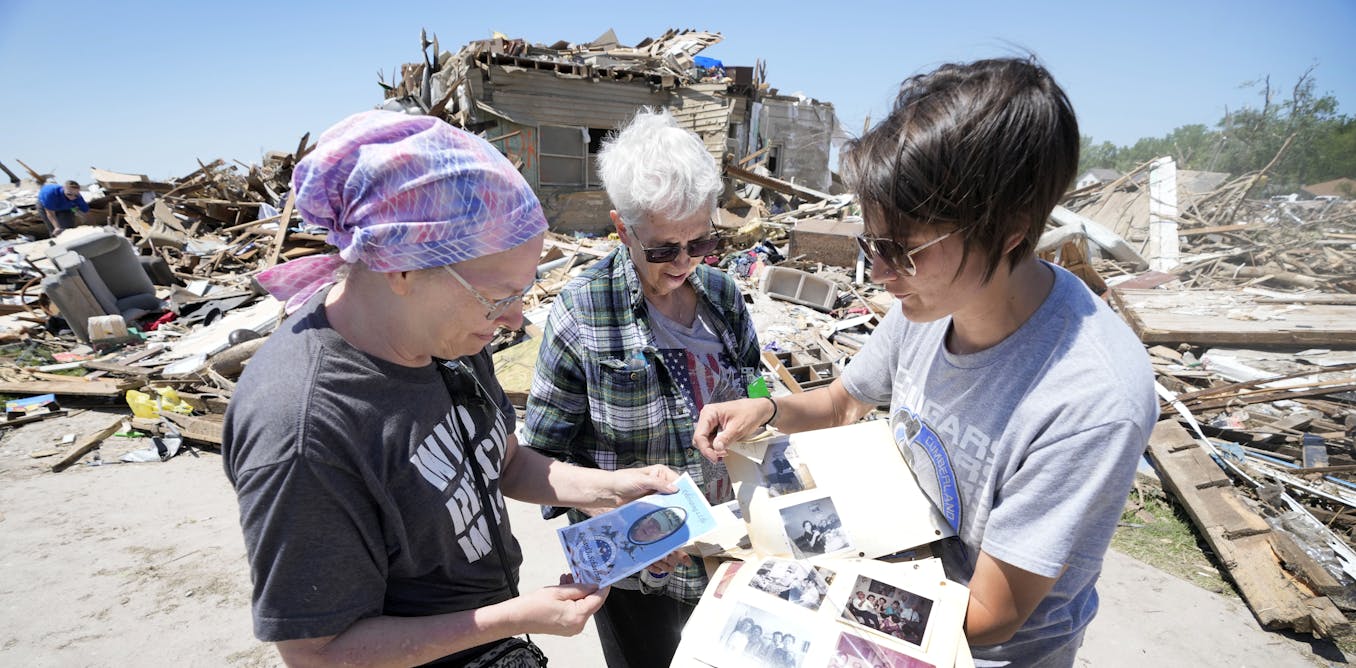How to Choose Clothes for Longevity, Not the Landfill | Diarra Bousso | TED
In the fast-paced world of online shopping and fast fashion, it is easy to overlook the impact that our clothing choices have on the environment. In her TED talk, Diarra Bousso sheds light on the alarming rate at which clothing ends up in landfills, with 40 garbage trucks full of clothes being discarded every minute. As someone who grew up in a culture where clothing was created to last and be passed down through generations, Bousso was inspired to create her own fashion brand, Diarrablu, with a focus on sustainability and longevity.
Through her work, Bousso has identified key learnings that can be applied to the broader fashion industry in order to reduce waste and encourage conscious consumption. By involving customers in the design process through surveys and polls, producing garments on demand, and actively mitigating returns, companies can limit overproduction and reduce their environmental impact.
Bousso’s journey with Diarrablu has shown that sustainability and profitability can go hand in hand. By prioritizing responsible practices and engaging with customers in a meaningful way, companies can create a more sustainable fashion future that benefits both the planet and their bottom line. As Bousso eloquently puts it, it is not just about sustaining things, but about sustaining a culture of love and respect for our shared resources and the gift of life on this precious planet we call home.
Watch the video by TED
Isn’t online shopping just amazing? I think we’ve truly mastered the art of retail therapy without ever leaving the house. I mean, who needs a single, carefully selected jacket when you can order a jacket collection, pays zero shipping fees, try it all at home and return the ones you don’t like?
And let’s not forget the thrill of unboxing an outfit that costed less than your lunch. So great, right? Well, there is a hidden cost to this level of convenience, and Mother Earth is not so proud. In the little time it took me to introduce this topic,
40 garbage trucks full of clothes went to a landfill. By the end of today, that number will be 86,000. That’s one garbage truck every second. And this is because fashion is one of the most polluting industries in the world. This waste is rooted in overconsumption and overproduction.
I’m one of the many entrepreneurs working on this problem. I actually didn’t intend to work in fashion. I started my career on Wall Street in my early 20s, was obsessed with being rich, and back then I probably preferred fashion brands that supported my wasteful shopping habits. But in July 2012,
My life completely changed after a life-threatening accident that left me in a coma. When I woke up in a blank room with a blank memory, I had the opportunity to start over. I no longer saw life as a race to just consume and accumulate things
But rather felt a deep desire for meaning and impact. As I recovered, surrounded by my family in Senegal, I was fascinated by a culture of longevity where philosophically it’s not really about the word “sustainability,” but the active acts of sustaining everything we love: traditions, resources, culture.
In our customs, clothing was created to last. Imagine my grandma, who rocked the same dresses at 102 years old as when she was 50. Styled differently, of course. Here I’m a cute 12-year-old wearing a dress made from her scarf. Every time I head back to the car,
My mom always hands me pieces from her closet, wrap skirts and dresses that can be adjusted to fit like a dream. Like this dress she wore 20 years ago. See, growing up, getting a new outfit was not really an impulse purchase, but rather a very intentional process rooted in love and longevity.
You’d go to the market, get just the right amount of fabric needed, and then work with a local artisan to get your clothes made to order. Styles were often convertible and adjustable so as to fit you across different body changes over time.
And then at the end, we’d just pass it down to someone else. The concept of waste wasn’t even conceivable for us. See, sustaining things is not just what we do. It’s a love language about who we are. I decided to channel this inspiration to create my own fashion brand, Diarrablu,
With the goal to produce clothing more responsibly. Now I understand that in order to reduce waste, we need to encourage conscious consumption in a way that works for the modern customer. A customer who wants more choices and the ability to act on their preferences. Over the last three years,
I’ve identified three key learnings that I believe can be applied to the broader fashion industry in order to be more sustainable. One, we can survey customers online to cocreate designs they actually want to consume or purchase. Two, we can produce consciously, on demand or based on preorders to reduce waste.
And three, we can actively mitigate returns to reduce overconsumption. I truly believe that people are more likely to keep their clothing for years, if not decades, if they contributed to the design of that clothing. Companies would make better design decisions if they actually asked the customers what they wanted.
This is why I’ve been leveraging our online communities, and any company can do this, using newsletter, social media, SMS can engage with customers not only to learn about their preferences, but to create a sense of ownership. Here we approach marketing not like a pitch, but rather a dialogue.
The message being, “We are cocreating a responsible future together,” rather than, “You’re just buying my products.” At Diarrablu, in order to do this and streamline the process, I use math equations, and lately AI, mixed with my hand drawings, to create unique textile prints. Once we apply them on garments digitally,
We are able to show them on social media without creating any samples. We’ve made this process so efficient that we can create hundreds of print iterations per day, show them on different body shapes and ethnicities, and within 24 hours we know exactly what to produce. Textiles are then printed digitally,
Which can be done in small batches, compared to screen printing. Digital printing is also a more sustainable option by using less energy and creating a smaller carbon footprint. Companies in the US, like Finesse, also use a crowdsourcing model, with designs created by AI in order to produce in small batches and reduce waste.
Another retailer, Stitch Fix, relies heavily on polls to understand customer preferences in order to better manage inventory. For me, polling was a way to figure out what to actually produce with limited resources, because when I started, I didn’t have the finances to just produce inventory and guess. On the business side,
I’ve learned that the polls are directly correlated to sales. Our data for the past three years shows that our bestsellers were always the winning styles during the polls, and vice versa. Like this beautiful print photographed in the Maldives last year. Overall, crowdsourcing the design process is a powerful tool to limit overproduction.
The next learning was conscious production. And this can be achieved multiple ways. For Diarrablu, we currently make all our garments to order by Senegalese artisans, and this is like how I used to get my clothes made growing up. This means no overproduction. Our only stock is from online returns.
By producing garments on demand this way, using the top prints from crowdsourcing, we are able to reduce textile waste by over 60 percent. However, it’s not always possible for every company to produce on demand. There is a financial and operational aspect that can make it challenging. A great alternative is taking preorders
And negotiating with factories on minimums, something we are considering as well for the long term. Overall, conscious production will help limit excess inventory, which is an issue for many fashion companies today. The third idea is actively mitigating returns. According to the Coresight Insight,
The return rate for online clothing is 24.4 percent in 2023, and one of the big reasons is free shipping on returns, which incentivizes overconsumption. However, recently big groups like Zara, JCPenney have been starting to charge return shipping fees or restocking fees in order to limit waste. We also charge return shipping fees,
And the goal is to encourage you to only order what you need. However, I believe that to truly limit overconsumption, we need to create a mindset shift around returns that involves the customer, and communicating that with the customer before even an order is shipped. This can require difficult conversations sometimes.
For example, when a customer orders multiple sizes of the same item, we simply don’t fulfill the order. We take the opportunity to kindly reach out, express our commitment to sustainability and ask them to join us and support this mission. We explain the impact of ordering duplicates
And then provide them all the support they need to figure out the perfect size, so they can narrow their selection. I always get a big smile on my face every time I get a notification that a customer was inspired by these emails. Really my goal is to make sure
That they don’t order duplicates in general, no matter where they shop. So far, the returns approach that we’ve been implementing has been very successful. Our return rate on our website is 12 percent, half of the industry. And by organizing an annual outlet sale focused on sustainability,
We’ve been able to sell three quarters of that stock in the last three years. My journey with Diarrablu has shown me that fashion can be approached responsibly, and these ideas can be applied by many companies. These learnings are not great just for the planet, they are also powerful drivers of growth and profitability.
In the last three years, we’ve seen our revenues grow 35x, with very minimal inventory and healthy profit margins. This was my first artwork post-accident, a self-portrait titled “Walking to a New Beginning.” I hope it can inspire you to journey together towards a more sustainable fashion future.
At the end, I was given a second chance to be alive, and that instilled in me a deep desire to not only sustain my health but also our shared resources, a culture of love, and most importantly, the gift of life on this precious planet we take so much for granted. Thank you.
About TED
The TED Talks channel features the best talks and performances from the TED Conference, where the world’s leading thinkers and doers give the talk of their lives in 18 minutes (or less). Look for talks on Technology, Entertainment and Design — plus science, business, global issues, the arts and more. You’re welcome to link to or embed these videos, forward them to others and share these ideas with people you know.
Video “How to Choose Clothes for Longevity, Not the Landfill | Diarra Bousso | TED” was uploaded on 03/23/2024 to Youtube Channel TED



































